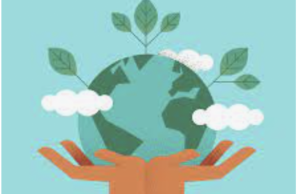Clothing Consumption: As trends cycle faster, consumers buy more than ever before

By Sommer Danielsen
We are consumers. We purchase goods and services, filling our needs with the industries provided us. Acknowleding this, we can’t just discuss the broad, universal topic of consumption. We must get much more specific. We must talk clothing consumption. It’s become clear the fast-paced fashion we see today leads us to obtain much more than is necessary to fill our needs.
In a sample of 30 CFHS students, the average number of clothing pieces owned was 190. Of those 190, only 55, or 29 percent are worn on a regular basis. This glaring disproportion is just one example of what we have and what we use, showing how consumers in the 21st century are buying beyond all reasonable limits.
In this sample, most students admitted to buying a new piece for their wardrobe one-two times a month, and the reasoning for doing so is largely agreed upon. 90 percent of this sample agreed that the most common reason for buying new clothing is not necessity, but for building a wardrobe they admire or deem trendy.
This recreational style of clothing consumption is prominent not just in this group of CFHS students, but around the nation. According to the most recent statistics from the Bureau of Labor Statistics, spending on apparel and services climbed 11.3 percent from 2013-2014, being one of the largest increases in consumer expenditures. In comparison, the rise in average expenditures was only 4.7 percent.
Something is taking shape with today’s consumers. Odds are the answer to this puzzle is simple: we are buying more.
The fashion cycle is not just an opportunity for older people to wear clothes they wore at a younger age. The fashion cycle is an established concept, taught to students of fashion from textbooks, after having proved itself time and time again.
In a traditional fashion cycle, a trend is first introduced as an idea on a runway by high fashion designers. From here, celebrities and the media give this idea even more visibility. After this, major high-street retailers work to create and manufacture accessible designs for the general population. Consumers then buy into this idea until it reaches its peak and becomes accepted as a trend. Now, it’s all downhill from here. The trend eventually becomes outdated, sometimes as fast it was adopted. We see it happen constantly. In recent years we’ve seen color-blocking, combat boots, cut-out shoulders, peplum and more, all of which have captured the attention, and pocketbooks, of consumers, only to be met with an inevitable plunge in popularity. So hug your Chelsea boots and minimalistic jewelry close, the time will come when you have to say goodbye.
The most important thing about the fashion cycle is the speed at which it is beginning to move. Social media gives us constant access to people across the globe, instantly offering the opportunity to see what is being worn. In other words, the communication of fashion aesthetics is flourishing. Thanks to this international interconnectivity technology allows, the lag from runway to retail is shrinking, as well as the time to adopt and drop trends.
Unfortunately, this speeding cycle often leaves us with masses of barely worn clothes, which we consider not acceptable for use. They pile in the back of our closets and fill our donation bags. We’ve accumulated so much stuff, that it no longer fits in our homes. Americans spend $24 billion each year on storage according to the Self-Storage Association. With its constant growth, the storage industry has been adjudged recession-resistant.
Even with big closets and extra storage, all this stuff requires occasional sorting and tidying. So congratulations, you decided what you can get rid of, but where does it go? Do you sell online, go to a consignment store, donate or toss?
The good news is, options are growing in terms of selling your gently used clothing. Websites like Poshmark, ThredUP and others make it easy to get some cash for unused clothing, as do local consignment stores like Stuff or Plato’s Closet. You may also opt to donate your unused clothing at places like Goodwill or the Salvation Army.
At a local consignment store, Stuff marketing director Jody Hagerty has witnessed the rise of consigned clothing. “We have definitely seen an increase in the number of consignors and consignor items we enter each year at all of our locations,” Hagerty said.
With six stores in Iowa, Stuff receives anywhere from 1,000 to 3,000 items a day, depending on the size of the store. Keep in mind, Stuff also has to send one-third, to one-half of what they receive away because it does not meet their standards of quality.
Thankfully, Stuff does offer alternatives to people looking to get rid of old clothing. They encourage people to donate or to take advantage of Stuff’s recycle option. “For those consumers that are environmentally conscious, consigning their gently used items is a great solution for their unwanted items. It gives items a longer life span so less ends up in landfills,” Hagerty said.
While these remedies are great options for our excessive activity as consumers of clothing, they are only treating the results of overbuying. They are like medications for the side effects of a deeply rooted disease. These remedies do not address the real problem at hand: the extreme degree of our clothing consumption.
Being mindful of our purchase decisions has become genuinely difficult. Even those who turn a blind eye to what fashions are gaining traction are not exempt from the desire for new things. Constant advertising also plays a role, convincing consumers of what they should buy.The world is telling us what it is we want; the Earth, however, doesn’t have a voice that speaks so loud.
It is our responsibility to act as conscious consumers, being mindful of our purchases. The best thing we can do is to limit what we buy and make do with what we have. This strategy can only hold for so long before genuine need arises. Because of that, we should take advantage of all of our second hand clothing sources. Shopping at thrift stores can help those with a serious and relentless dependence on the retail experience, as long as they have open minds.
Senior Jessica Huffman can speak for the huge benefits of shopping second hand. Finding everything from vinyl records and graphic tees, to repurpose-ready mom jeans, Huffman thrift shops to create her own, unique aesthetic. “You can find things that you know no one else will have, and you can put your own personal spin on it. Let’s say you find and old T-shirt. and it is a bit baggy and worn out, find a way to cut it up and make it look unique,” Huffman said.
Not buying all items at full price provides a lot of financial liberty. Huffman has had more money to pay for things like her phone, car and one day soon, her education. While being frugal is valuable, it isn’t the only benefit of shopping second-hand. “Not only do you save a lot of money by making/altering your clothes yourself, but it is a good feeling knowing that you have made something that no one else can find or replicate,” Huffman said.
Throughout the Cedar Falls and Waterloo area, Huffman has found lots of destinations for second hand treasures, including the Salvation Army, Goodwill (pro tip: always choose Waterloo over Cedar Falls), St. Vincent DePaul, 18th Street Vintage and the second-hand section of Mohair Pear.
After obstaining from shopping, and then shopping second-hand comes the third best option: shopping eco-friendly. New businesses are emerging with heightened attention to their environmental footprint. Unfortunately, some eco-friendly companies operate within a higher price range, simply because being kind to the planet takes a little more dough. For high schoolers, these purchases will be harder to make, but an occasional purchase could be plausible for some.
At the higher end of the price spectrum is Reformation, an eco-friendly, cutting-edge company definitely worth mentioning. The company says it best: “We make killer clothes that don’t kill the environment.” Their modern clothes embrace the minimalism of the early 2000s, while also featuring with whimsical prints and textiles.
BeGood and Mayamiko are both companies with a more affordable price point. BeGood is a T-shirt company for men and women that starts at just $20. They provide tasteful basics at a very reasonable price. Mayamiko provides jobs to people in African countries constructing clothing using traditional African techniques. Their upcycled collection features clothing made from recycled fabrics, ranging $30-$60.
While shopping for eco-friendly pieces, it should also be noted that fairtrade and organic pieces may not be eco-friendly. While the two causes are very important and should be important to buyers, their manufacturing could still be harming the environment as much as any other company.This is one more thing to consider as we make buying decisions.
We will continue to participate in this life as consumers, filling our needs with the industries provided. However, it’s time we had a real discussion about the effects of our never-ending buying. We have certain responsibilities as consumers of clothing. It’s time to be mindful of what we acquire and how those things came to be.









You must be logged in to post a comment Login